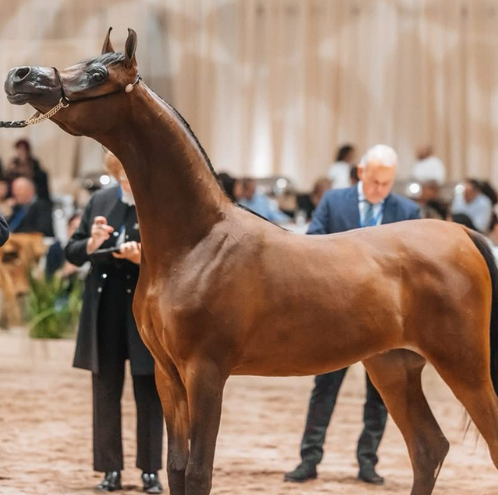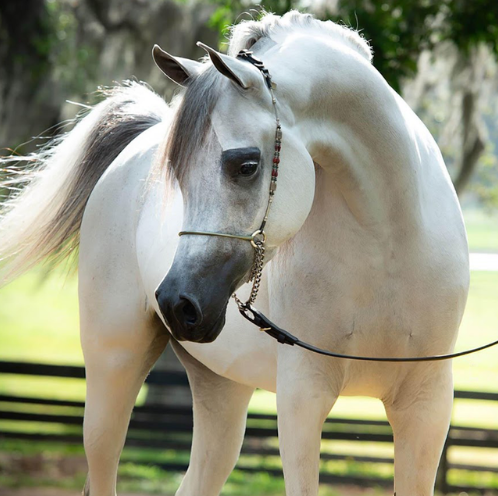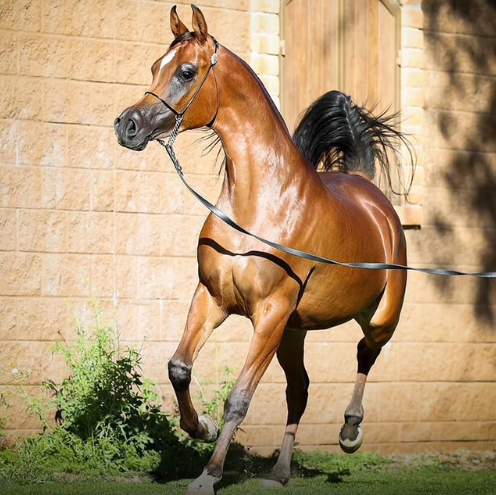Arabian Horse Conformation & Anatomy
One of the most distinctive features of the Arabian horse is its instantly recognizable conformation — a blend of refinement, strength, and balance that has remained consistent for thousands of years. Unlike many modern breeds that changed dramatically over time, the Arabian still reflects its desert origins and ancient purpose: to be a beautiful, efficient, and enduring partner.
Its anatomy is not just elegant — it is functional, designed for speed, stamina, agility, and survival. Understanding Arabian conformation helps owners, riders, and breeders appreciate why the breed performs as it does in halter, endurance, sport, and pleasure disciplines.
Key Physical Characteristics of the Arabian Horse
Arabians have a combination of traits found in no other breed:
• Short, dished face with a refined muzzle
• Wide forehead with large, expressive eyes
• Well-arched neck that ties high into the shoulder
• Short back, strong loin, long, level hip
• High tail carriage and curved, lifted croup
• Dense bone but not bulky mass
• Efficient stride and naturally elevated movement
• Slim yet powerful body, built for endurance
These traits are not just aesthetic — they are evidence of the breed’s natural adaptation to long-distance travel, heat tolerance, and versatility.
Unique Skeletal Structure – What Makes the Arabian Different
Arabians are the only major horse breed with structural differences in their skeleton:
| Feature | Arabian | Other Breeds |
|---|---|---|
| Ribs | 17 | 18 |
| Lumbar Vertebrae | 5 | 6 |
| Tail Vertebrae | 16 | 18 |
This compact structure contributes to:
✔ Stronger back & loin connection
✔ Smoother stride and better balance
✔ Higher natural tail carriage
✔ Increased agility and turning ability
A shorter back also means less stress when carrying weight over long distances — a huge advantage in endurance.
Head, Eyes & Expression
The Arabian head is one of the most iconic and photographed profiles in the world.
Breed-defining head traits include:
• Concave “dished” face
• Wide jowl (room for airway expansion)
• Prominent eye sockets and large eyes
• Short muzzle with fine nostrils
• Straight or slightly concave poll line
• Small, beautifully shaped ears (often curved inward)
Expression is not simply “pretty” — it reflects alertness, kindness, and intelligence, hallmarks of the Arabian soul.
Neck, Shoulder & Front End
Arabians carry their neck high and proud, allowing for natural elevation and softness in motion.
Key traits include:
• Long, well-shaped neck with fine throatlatch
• Shoulder angle averaging 45–50° for reach
• Light forehand with a free, open stride
• Strong, upright neck base (vs low-set carriage in other breeds)
Because the neck ties in high, Arabians naturally display a soft, lifted posture without forced collection.
Back, Loin & Rib Cage
Arabians are known for:
• Short, strong backs
• Well-sprung ribs
• Deep girth and excellent lung capacity
This allows the horse to carry weight efficiently, including riders, armor, and gear in ancient times — now useful for endurance saddles, dressage frames, or youth riders.
Hindquarters, Hip & Tail Carriage
Arabians have a long hip and flat croup, not rounded like stock horses. This is why:
• The tail sits higher
• The tail lifts when excited or moving
• The hind end supports long-term stamina, not sprinting power
The high tail carriage is a breed signature — not trained, not forced — simply nature.
Movement & Gait Style
Arabian movement is described as light, floating, elastic, and efficient.
Common traits in motion:
• Balanced, ground-covering stride
• Light footfall — not heavy or pounding
• Natural elevation in trot
• Cadence and rhythm even at liberty
• No wasted movement or dragging limbs
They may not have the exaggerated knee action of Saddlebreds or the sheer power of Warmbloods, but their movement is admired for grace, smoothness, and energy conservation.
Conformation in Halter vs Performance Arabians
Some lines are bred more for extreme refinement and show-ring presence, while others emphasize athletic build and endurance strength.
| Type | Primary Use | Traits |
|---|---|---|
| Halter / Type Arabians | Showing & breeding | Extreme head type, neck carriage, charisma |
| Performance Arabians | Sport, trail, endurance | Longer lines, stronger bone, balanced frame |
| Dual-purpose Arabians | Both | Structured, refined, athletic, versatile |
Both are still 100% Arabian — simply bred with different goals in mind.
Why Conformation Matters for the Arabian’s Future
Correct conformation preserves:
✔ Soundness
✔ Rideability
✔ Longevity
✔ Breeding value
✔ Historical authenticity
The Arabian horse is not a “created” breed. It is a preserved one.
The responsibility of today’s breeders is not to invent a new horse — but to continue an ancient design that has already proven itself through war, travel, survival, sport, and companionship.
Contact Us for Inquiries or to Schedule a Visit
Whether you are searching for a future show prospect, a foundation mare, or a lifelong companion, we are happy to answer questions, share pedigree details, or help guide you toward the right Arabian horse.
Phone: (630) 215-5545
Email: alameerastable@gmail.com
Location: 24224 S 88th Ave, Frankfort, IL 60423
Visiting Hours: By appointment only
INTERNATIONAL INQUIRIES WELCOME
Explore More Arabian Horse Guides
Arabian Horse Guide (Main Page)
History of the Arabian Horse
Arabian Horse Bloodlines & Types
Arabian Horse Temperament & Intelligence
Arabian Horse Care & Feeding Guide
Arabian Horse Training & Performance Disciplines
Arabian Horse Breeding & Bloodlines Overview
Arabian Horse Conformation & Anatomy
Arabian Horse Prices & Buying Guide
Arabian Horse Registration & Pedigree Papers Explained
Arabian Horse Endurance & Athletic Ability




